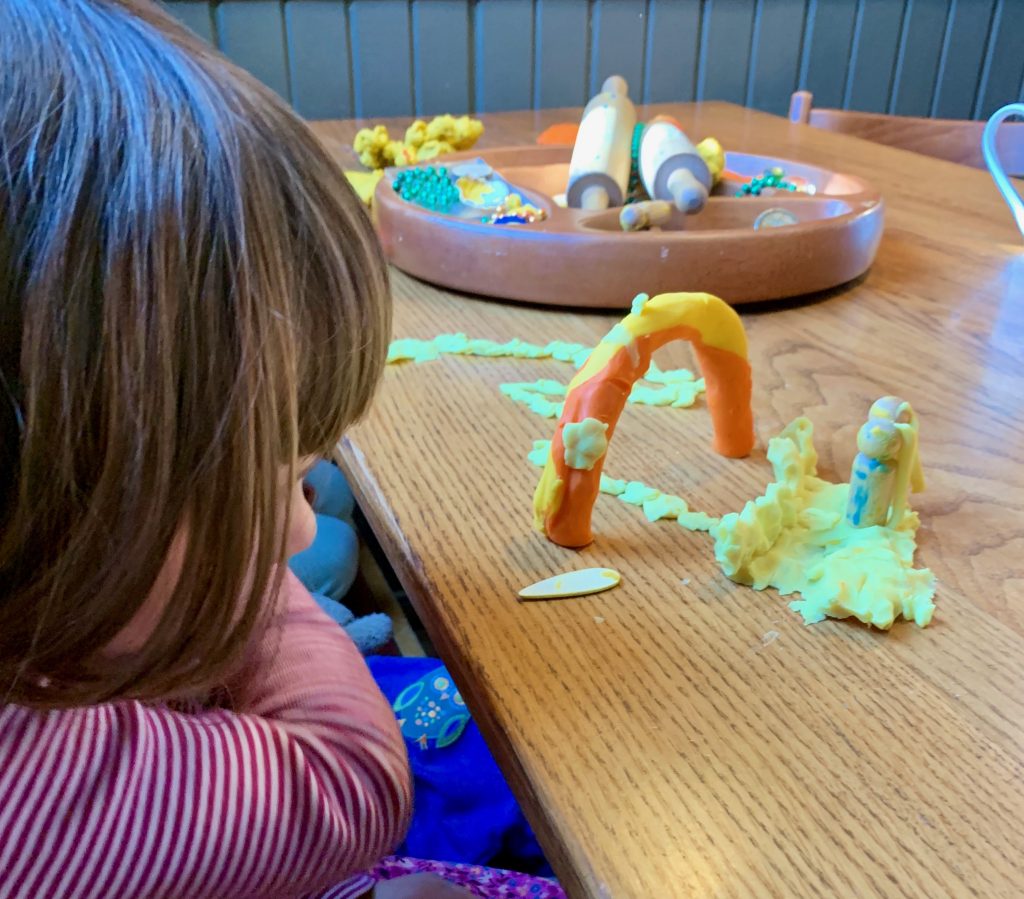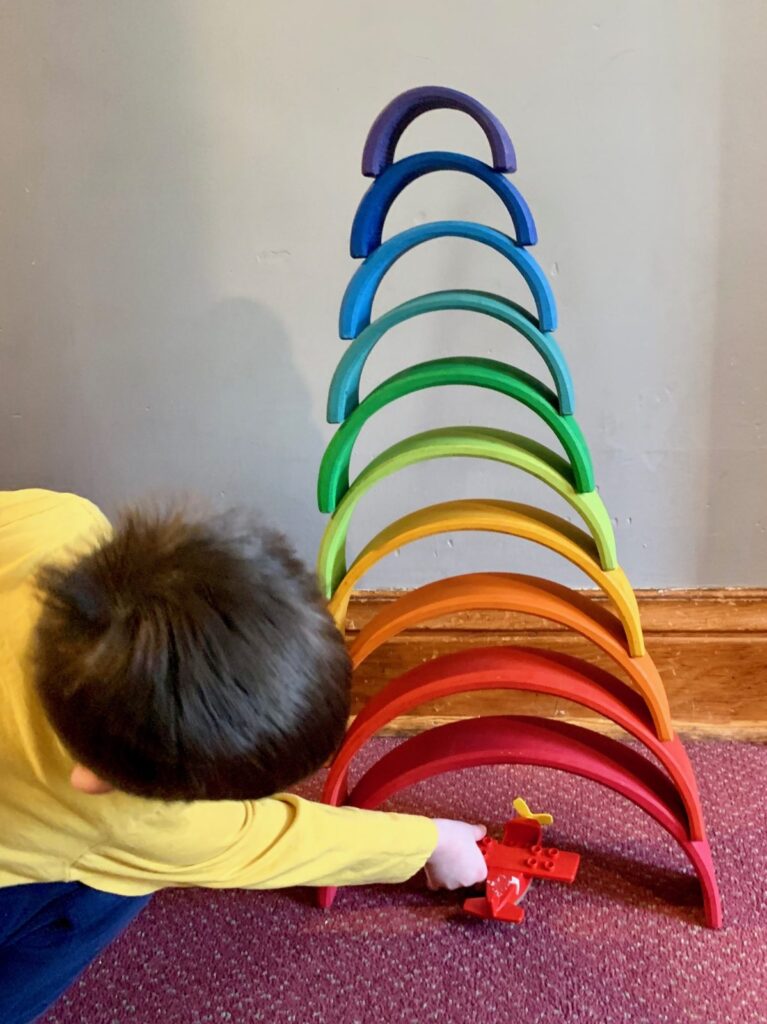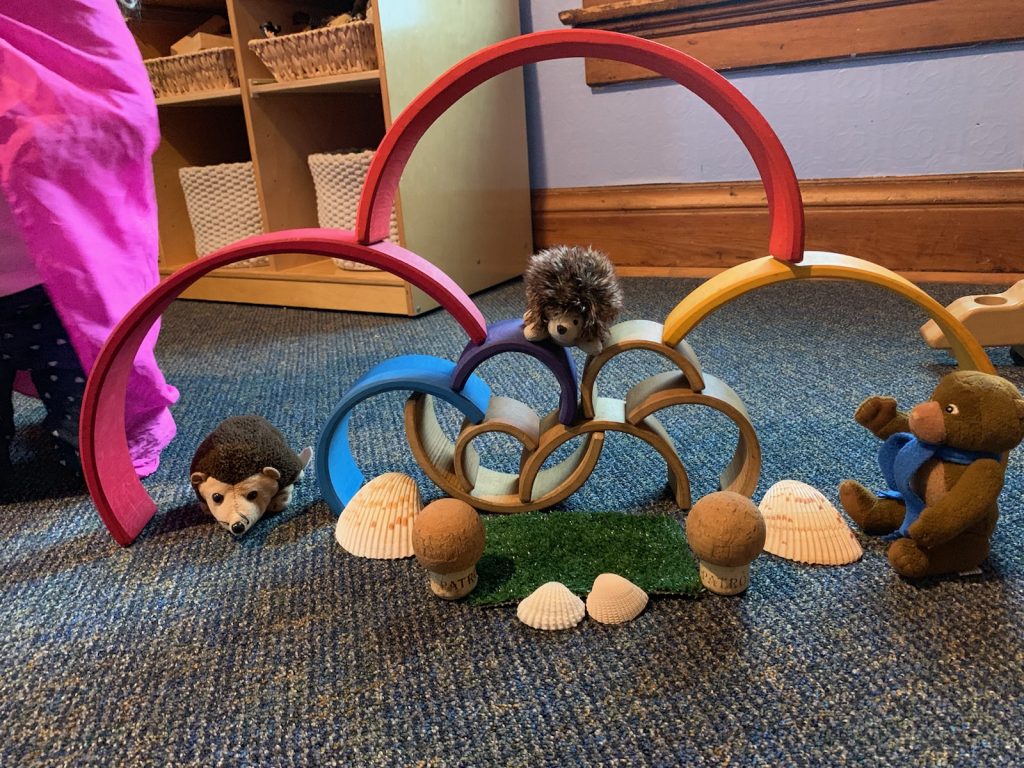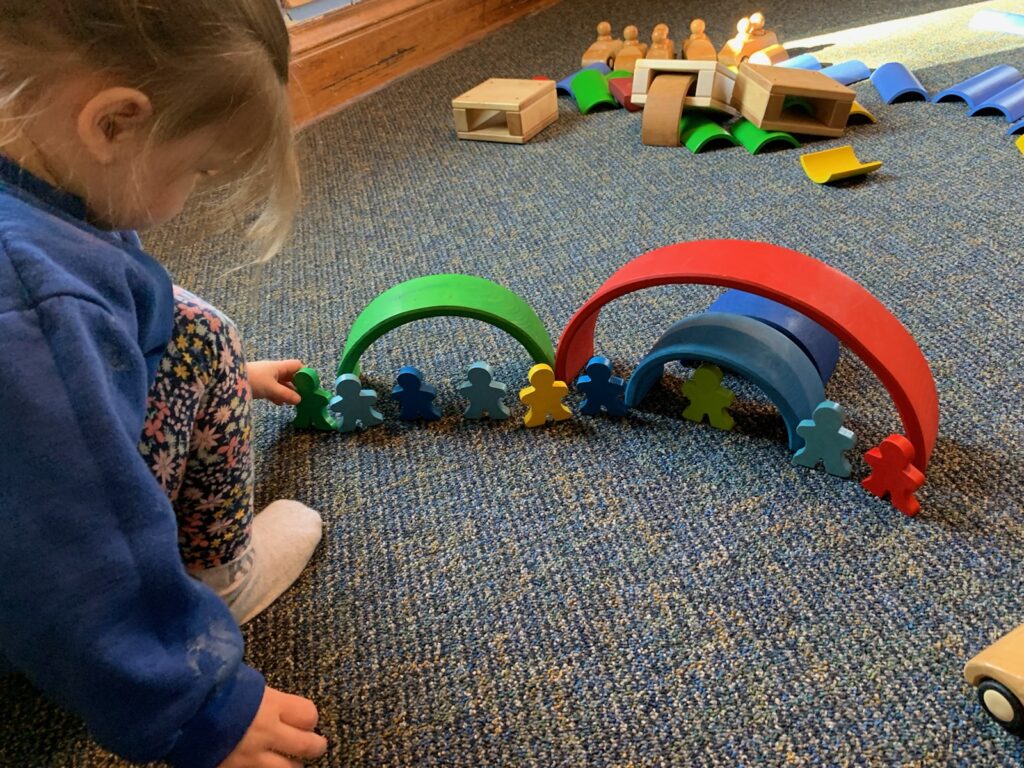Building Arches: Exploring Shape, Structure, and Engineering

"Look, look, I made a rainbow!” exclaims three-year-old Evelyn.
We’re working at the clay table, and I take a moment to admire her creation: a small orange arch—crafted from clay and decorated with gemstones, a tree cookie, and Mardi Gras beads—on a yellow clay base.
“It does look like a rainbow!” Noah exclaims with excitement. “I can make a rainbow, too!”
As the children work on their clay rainbows, I introduce a new concept: “It's also called an arch.”
Noah lights up with recognition and says, “My grandma lives by the Arch!”

And just like that, our investigation into arch engineering begins!
Soon, arches are showing up everywhere in our classroom—in more clay creations, in drawings, and even during block play as the children experiment with how to engineer an arch so that it stays upright, holds weight, and fits into larger structures.
The most exciting learning often comes as the children pursue their own interests. As Evelyn, Noah, and their fellow engineering explorers continue to experiment, they begin to understand how structures are built and what makes them stable.
The group has recently developed a fascination with pattern blocks, which they treat like puzzles. They focus on their building projects for long stretches of time, experiment with different combinations to create complex patterns, and rework their designs when needed.

Soon, the arches are more than just shapes—they are houses for people, theaters for finger puppets, and supports for other structures.
As the children explore how different shapes and materials can be combined, they ask questions such as:
- What happens if we make the arch taller?
- What happens if we place heavier objects on top of our creations?
As they craft their arches out of clay, blocks, and other materials, the lessons flow naturally. They begin to gain valuable insights into engineering principles such as forces, balance, stability, and weight distribution.
For example, as they work on their arches, they instinctively start to test out how to make them more stable. They discover that their arches hold up better when they are wider at the base. They notice that the arches become more stable when extra support is added on the sides. These discoveries help them gain insights into the principles of structural engineering.

When they add weight to their creations, they see how the forces act on their structures, sometimes causing them to collapse, sometimes making them stronger.
These simple hands-on experiments are rudimentary versions of the tests that engineers run when they design new buildings, bridges, and even roller coasters.
I love how the children translate their understanding into language. They don’t just say, “It fell down!” They start talking about why it fell.
“It needs more support!” they shout. “It’s too heavy there!” They’re thinking like little engineers, problem-solving in real time.

As the children continue their play-based arch investigations, they also gain insights into scientific concepts such as balance and material properties and learn that different materials behave in different ways.
For example, when they create arches out of clay, they observe that the clay can bend or crack. But when they use blocks or other solid materials, they discover that their arches are more stable.
These early experiments with arches, structures, and forces lay the groundwork for later, more advanced scientific thinking.
They also begin to understand how structures withstand forces, how materials interact, and how engineering design principles help solve real-world problems.

This hands-on learning encourages the children to engage in critical thinking and experimentation—two key aspects of the scientific process and engineering design.
They are beginning to understand that engineering isn’t just about building things—it’s about testing ideas, making changes, and arriving at solutions to problems.
So, the next time you’re with your young learners, grab some clay or blocks and invite them to build arches.
Encourage them to experiment with how the shapes fit together, how forces act on their structures, and how they can make their creations more stable.
Watch as they start to think like engineers—one arch at a time!
